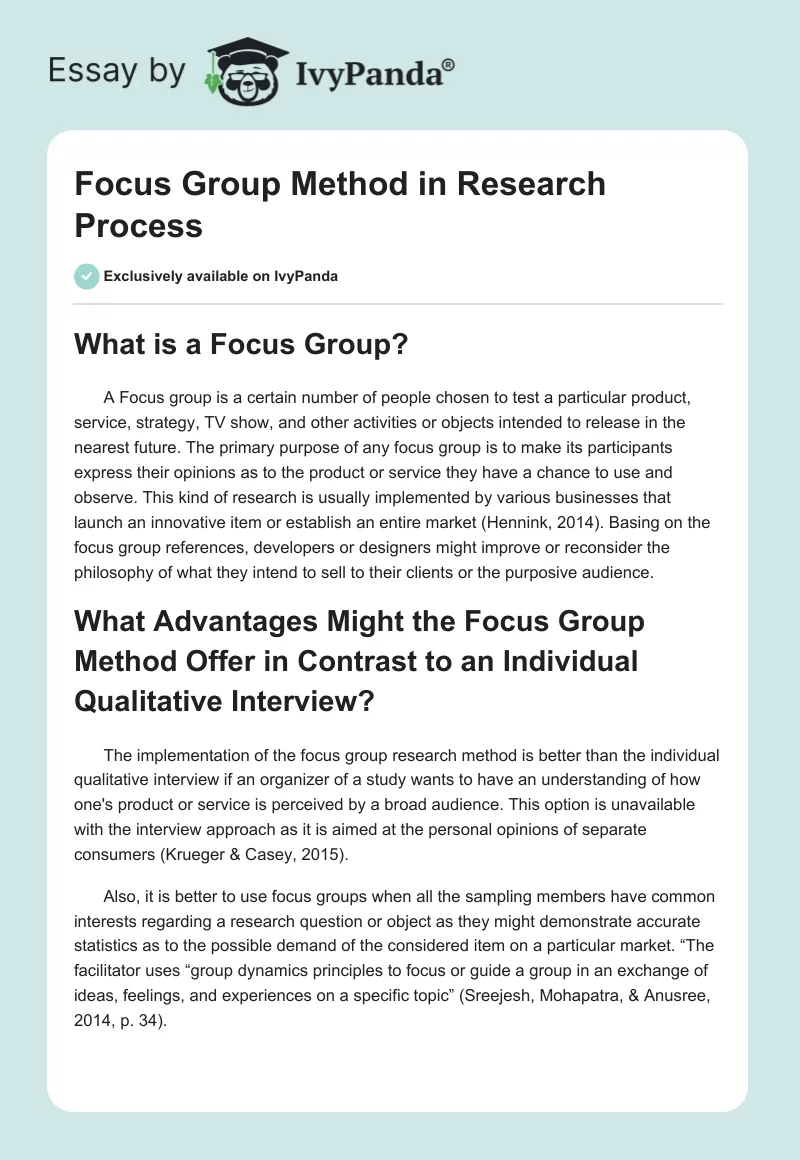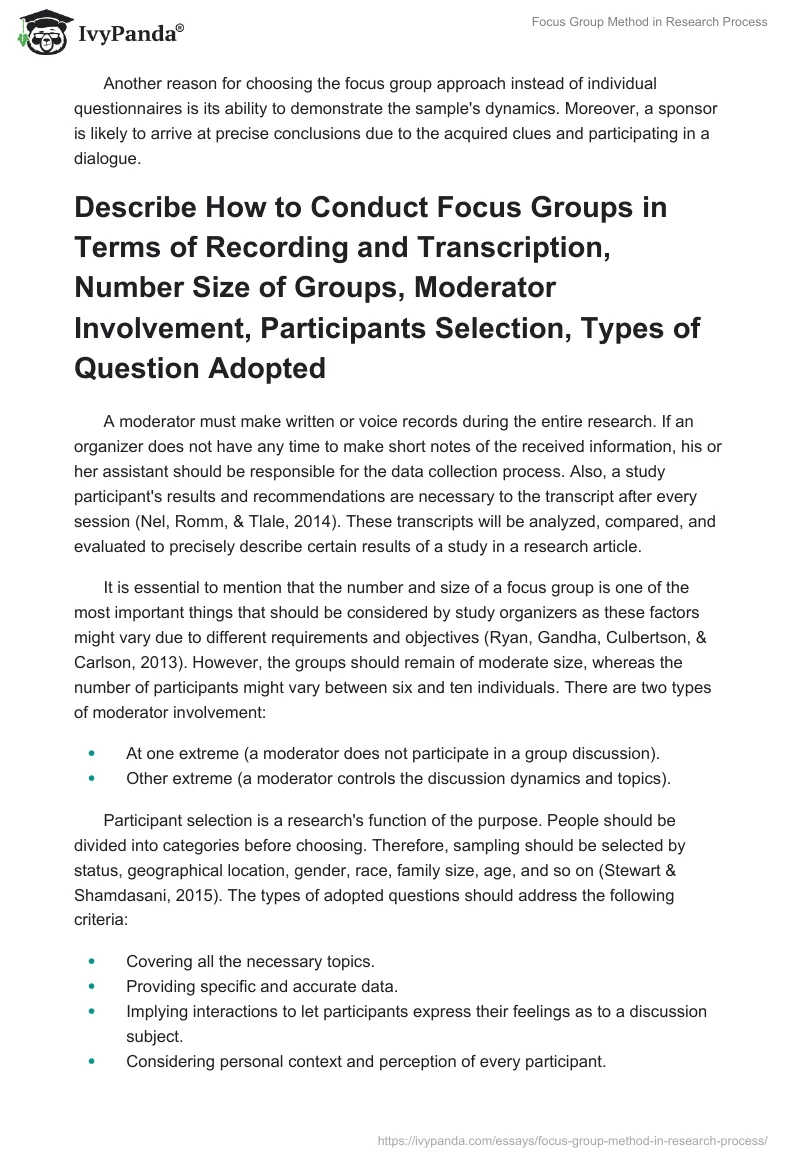What is a Focus Group?
A Focus group is a certain number of people chosen to test a particular product, service, strategy, TV show, and other activities or objects intended to release in the nearest future. The primary purpose of any focus group is to make its participants express their opinions as to the product or service they have a chance to use and observe. This kind of research is usually implemented by various businesses that launch an innovative item or establish an entire market (Hennink, 2014). Basing on the focus group references, developers or designers might improve or reconsider the philosophy of what they intend to sell to their clients or the purposive audience.
What Advantages Might the Focus Group Method Offer in Contrast to an Individual Qualitative Interview?
The implementation of the focus group research method is better than the individual qualitative interview if an organizer of a study wants to have an understanding of how one’s product or service is perceived by a broad audience. This option is unavailable with the interview approach as it is aimed at the personal opinions of separate consumers (Krueger & Casey, 2015).
Also, it is better to use focus groups when all the sampling members have common interests regarding a research question or object as they might demonstrate accurate statistics as to the possible demand of the considered item on a particular market. “The facilitator uses “group dynamics principles to focus or guide a group in an exchange of ideas, feelings, and experiences on a specific topic” (Sreejesh, Mohapatra, & Anusree, 2014, p. 34).
Another reason for choosing the focus group approach instead of individual questionnaires is its ability to demonstrate the sample’s dynamics. Moreover, a sponsor is likely to arrive at precise conclusions due to the acquired clues and participating in a dialogue.
Describe How to Conduct Focus Groups in Terms of Recording and Transcription, Number Size of Groups, Moderator Involvement, Participants Selection, Types of Question Adopted
A moderator must make written or voice records during the entire research. If an organizer does not have any time to make short notes of the received information, his or her assistant should be responsible for the data collection process. Also, a study participant’s results and recommendations are necessary to the transcript after every session (Nel, Romm, & Tlale, 2014). These transcripts will be analyzed, compared, and evaluated to precisely describe certain results of a study in a research article.
It is essential to mention that the number and size of a focus group is one of the most important things that should be considered by study organizers as these factors might vary due to different requirements and objectives (Ryan, Gandha, Culbertson, & Carlson, 2013). However, the groups should remain of moderate size, whereas the number of participants might vary between six and ten individuals. There are two types of moderator involvement:
- At one extreme (a moderator does not participate in a group discussion).
- Other extreme (a moderator controls the discussion dynamics and topics).
Participant selection is a research’s function of the purpose. People should be divided into categories before choosing. Therefore, sampling should be selected by status, geographical location, gender, race, family size, age, and so on (Stewart & Shamdasani, 2015). The types of adopted questions should address the following criteria:
- Covering all the necessary topics.
- Providing specific and accurate data.
- Implying interactions to let participants express their feelings as to a discussion subject.
- Considering personal context and perception of every participant.
It would be proper to mention that a conducted questionnaire or list of previously prepared questions might be used to organize sessions appropriately.
References
Hennink, M. M. (2014). Focus group discussions. New York, NY: Oxford University Press.
Krueger, R. A., & Casey, M. A. (2015). Focus groups: A practical guide for applied research. Thousand Oaks, CA: Sage Publications.
Nel, N. M., Romm, N. R., & Tlale, L. D. (2014). Reflections on focus group sessions regarding inclusive education: Reconsidering focus group research possibilities. The Australian Educational Researcher, 42(1), 35-53. Web.
Ryan, K. E., Gandha, T., Culbertson, M. J., & Carlson, C. (2013). Focus group evidence. American Journal of Evaluation, 35(3), 328-345. Web.
Sreejesh, S., Mohapatra, S., & Anusree, M. R. (2014). Business research methods: An applied orientation. Cham, CH: Springer.
Stewart, D. W., & Shamdasani, P. N. (2015). Focus groups: Theory and practice. Los Angeles, CA: SAGE.


